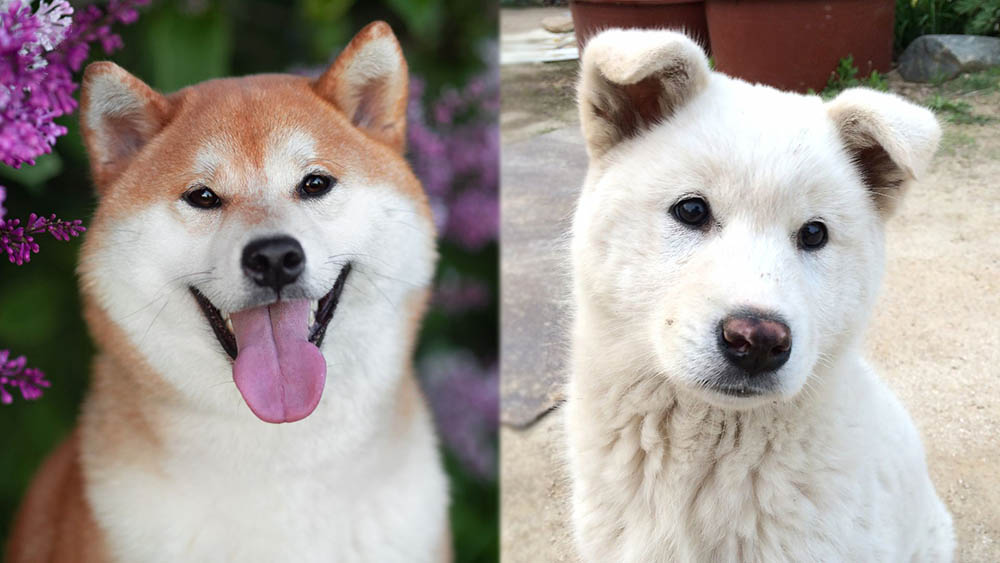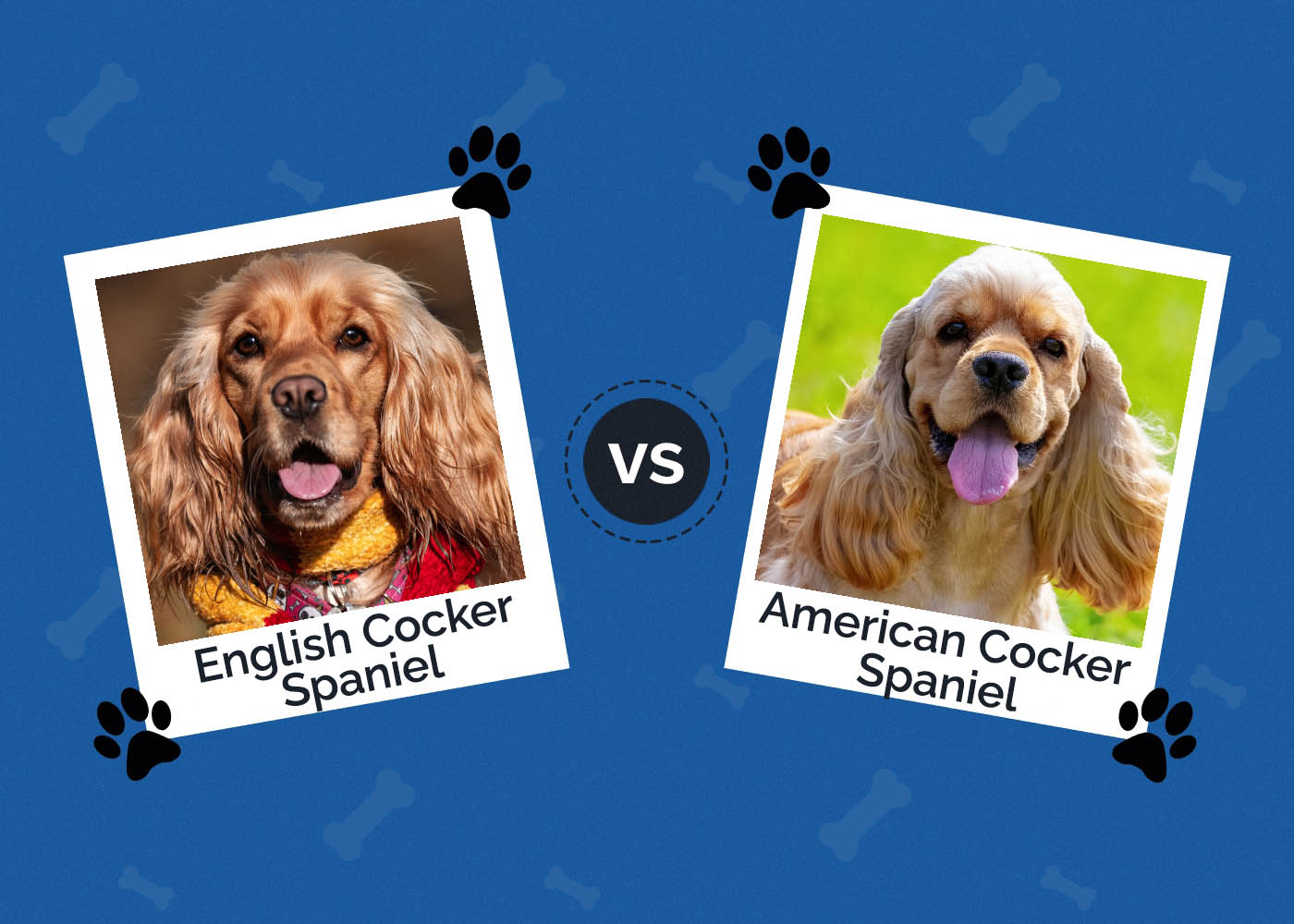3 Unique Types of Ridgeback Dogs (With Pictures)

Updated on
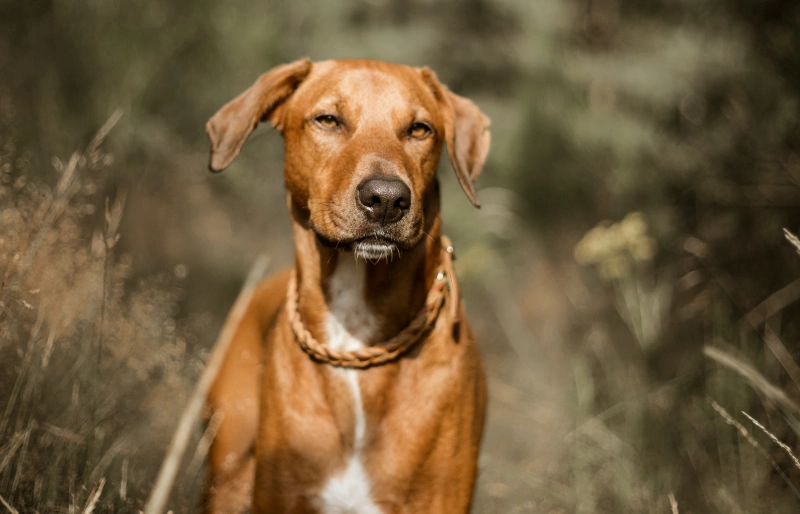
If you’re looking for a loyal and loving pup, then a Ridgeback dog might be the perfect fit for you. These friendly and intelligent breeds have become increasingly popular among pet owners in recent years. They come in three distinct varieties: the Rhodesian Ridgeback, the Thai Ridgeback, and the Phu Quoc Ridgeback.
Each of these Ridgeback dogs have their own unique characteristics, such as their size and coat type, and can make wonderful companions for any family. Keep reading to learn more about the three distinct types of Ridgeback dogs and why they’re the perfect pup for any family.
The 3 Types of Ridgeback Dogs
1. Rhodesian Ridgeback
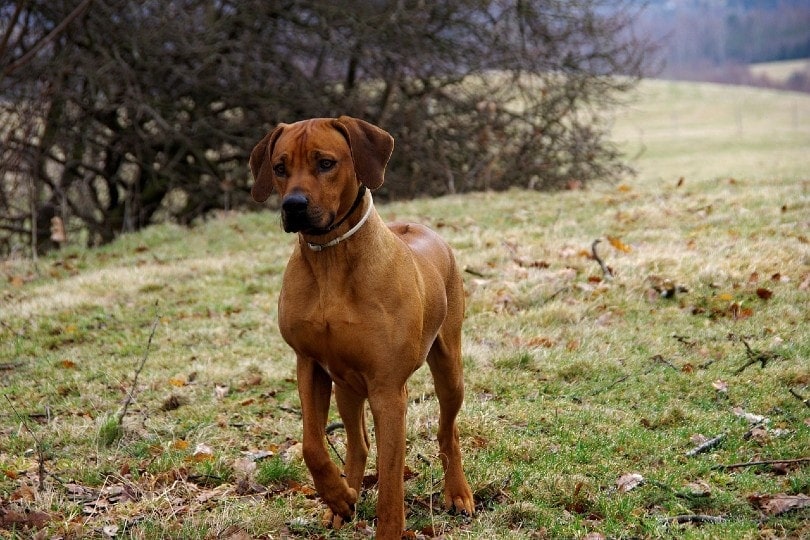
| Weight: | 40–48 pounds |
| Height: | 67–75 inches |
| Life Expectancy: | 10–13 years |
The Rhodesian Ridgeback is a towering, muscular dog breed that’s native to South Africa. It’s a medium-sized breed, typically weighing between 70 and 85 pounds. It’s also a fairly unique dog that has an interesting distinctive feature. This dog has a patch of fur along the middle of its back that runs in the opposite direction to the rest of its topcoat (like a shark’s fin). They have a short, dense single coat that is usually red or light or dark brown in color. They require minimal grooming, and their coats should be brushed at least once a week.
This ridge is a super loyal and devoted canine companion and is actually considered to be one of the most intelligent and loyal dog breeds. They’re also known for their protective nature and make excellent guard dogs. Their protective instincts and loyalty also make them great family dogs (though they should be watched when around young children). But they can also be independent and a bit aloof when it comes to strangers – especially if they aren’t trained as puppies.
But overall, it’s an active breed that needs regular exercise and activity (minimum of 2 hours every day) to stay healthy and happy. They thrive best with a job to do, and they can excel in activities such as agility, search and rescue, and tracking. They have a strong prey drive and have been known to hunt small game, so they should always be kept on a leash or in a securely fenced area.
2. Thai Ridgeback
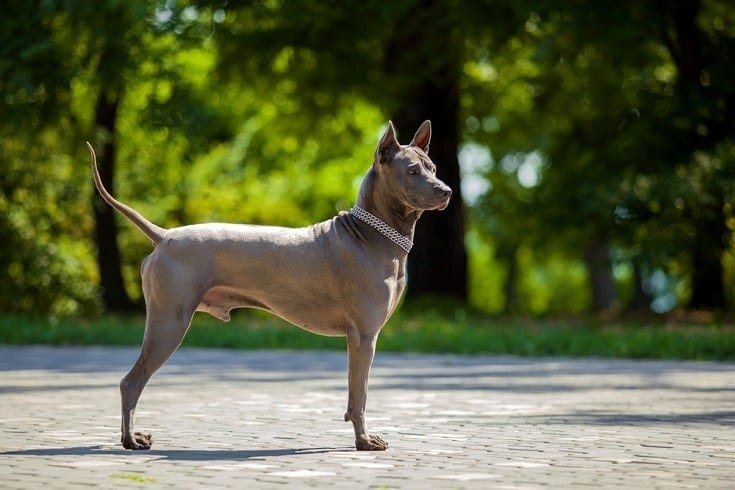
| Weight: | 16–34 pounds |
| Height: | 51–61 inches |
| Life Expectancy: | 12–13 years |
The Thai Ridgeback is a rare breed of dog that is native to Thailand, as their name states. It’s a medium-sized breed that is known for its distinctive ridge of hair on its back. The Thai Ridgeback is also an intelligent, loyal, and protective breed of dog. This breed is also known for its strong prey drive, which makes it ideal for hunting game and law enforcement activities.
The Thai Ridge has a short-haired coat that comes in a variety of colors, including black, gray, blue, red, and fawn. It has a muscular build, pointy ears, and a short muzzle, though it’s a bit shorter than the Rhodesian. The Thai Ridge has a life expectancy of 12 to 16 years and is generally healthy, although they can be prone to hip dysplasia, elbow dysplasia, and patellar luxation.
This breed also makes a great family pet. It is an intelligent breed that is easy to train, although it can be independent at times. It’s essential to provide the Thai Ridge with plenty of mental stimulation and exercise, as these dogs can be a bit out of hand if they aren’t trained as puppies.
But overall, you’ll find that the Thai Ridge is a pretty independent and confident breed of dog that’s easy to get along with – and not known for barking excessively. It’s loyal to its family and can be protective if it feels threatened. This Ridgeback is also known for its strong prey drive, so it’s best to provide it with plenty of exercise and stimulation to prevent it from becoming bored or destructive.
3. Phu Quoc Ridgeback
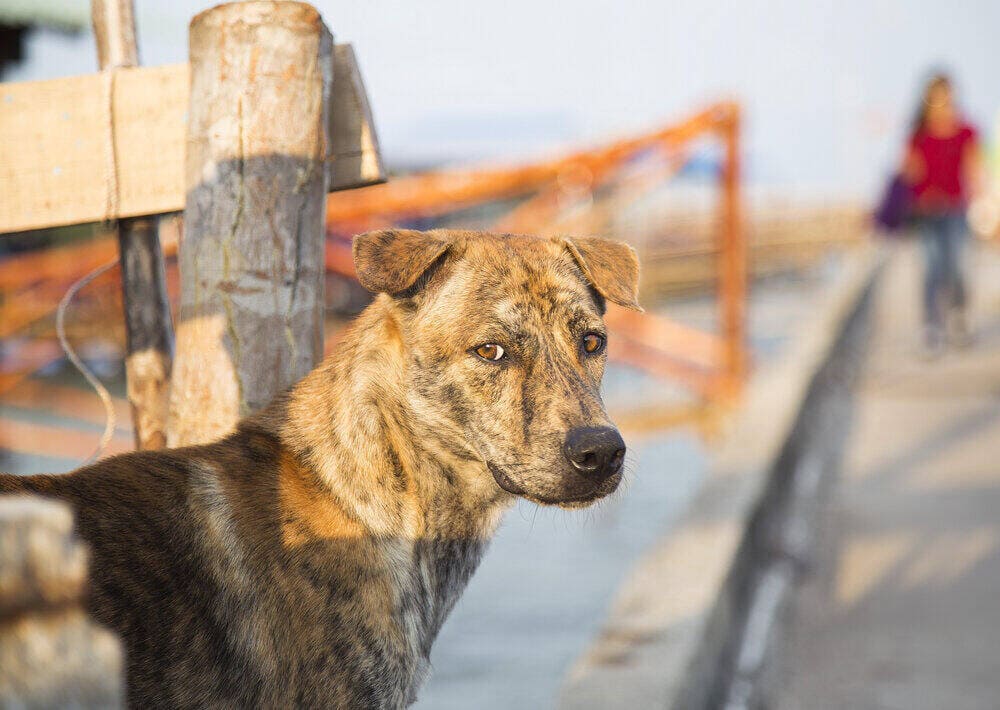
| Weight: | 12–20 pounds |
| Height: | 48–50 inches |
| Life Expectancy: | 10–13 years |
The Phu Quoc Ridgeback breed originated in Phu Quoc Island, Vietnam. It’s become a pretty rare breed and is now considered a national treasure of Vietnam. This ridge is a medium-sized dog with a muscular body and a short, smooth coat. Its most distinguishing feature (like the Rhodesian and Thai breads) is the characteristic dorsal ridge of hair that runs along its back.
The Phu Quoc Ridgeback has a strong, loyal character and is known to be an excellent family pet. And like the other two breeds, it’s also an active and intelligent breed that loves to play and explore its environment. The Phu Quoc Ridge is also an excellent guard dog, as it’s alert and protective of its family.
Its coat is easy to groom and requires minimal attention. It’s also a fairly hardy breed that is adapted to hot and humid climates. These agile dogs can easily climb hills and rocky terrain and are known to be good swimmers, which makes them great for exploring beaches and rivers.
But overall, you’ll find that it’s an amazing breed that’s loyal and protective of its family. With proper care and training, the Phu Quoc Ridge can make an excellent companion for any family.
FAQS About the Ridgeback Dog Breed
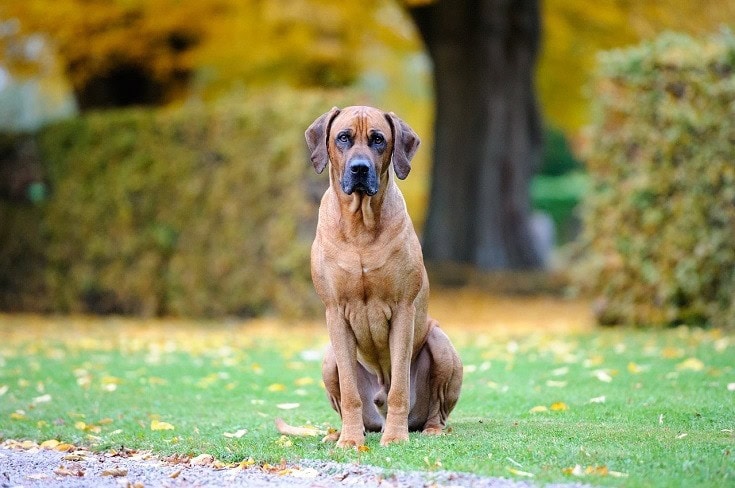
What’s the History and Origin of the Rhodesian Ridgeback? Are They Recognized?
Rhodesian Ridgebacks were originally bred in South Africa for hunting large game. They were bred from the African Lion Hound, a breed that was actually used to hunt and kill lions and other types of big game. The breed was later developed in Rhodesia (now known as Zimbabwe) by a group of European settlers. They wanted to create a hardy breed that could withstand the harsh African climate and still be able to hunt large game.
The breed was later brought to England and the United States in the early 1900s. In 1924, the Rhodesian Ridgeback was recognized by the American Kennel Club and is now one of the most popular breeds in the United States.
What Are the Costs of Owning a Rhodesian Ridgeback?
Owning a Ridgeback can be a costly endeavor, but it is worth it for the right person. The cost of a Rhodesian Ridgeback puppy can range from $1,000 to $2,000. But note that this doesn’t include the cost of vaccinations, food, and other supplies. Keep in mind that these are medium to large-sized active dogs, so you’ll need to make sure that you have both room for them to run around and play as well as the food for them to stay healthy.
These active dogs can consume anywhere within 1,300 to over 1,600 calories a day depending on their size – that’s a considerable amount of kibble! Like other canines, they’ll take dry kibble, raw food, or a combination of both. Grooming costs may vary, depending on the specific breed, but you’ll want to ensure that you are brushing their coat every week, clipping their nails every 2 to 4 weeks, and cleaning (and checking) their ears for fleas and infections.
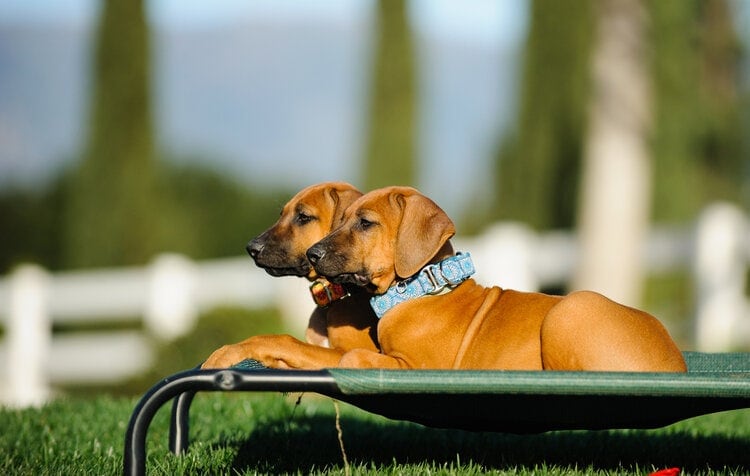
Where to Buy a Ridgeback?
If you’re looking to buy a Ridgeback dog, you have a few different options available to you. You can visit a breeder and purchase a puppy, or you can look for an adult dog through a rescue or adoption agency. Both options have pros and cons, so it’d help to do a bit of research beforehand.
And keep in mind that the Thai and Phu Quoc breeds are extremely rare in the United States, so you may need to find a breeder overseas in some cases – you can also expect to pay more for these puppies particularly. You’re not likely going to find these dogs at a rescue or shelter, so you may need to look online.
When you go to a breeder to buy a Ridgeback, you’re sure to get a healthy, pedigreed pup. The breeder will be able to answer any questions you have about the breed, and can provide information about the puppy’s parents and their health histories. However, you may need to wait for a litter to become available, and you will likely pay a higher price for a purebred puppy.
Can a Rhodesian Ridgeback Kill a Lion?
This question pops up a lot online when potential owners are researching this dog breed. It’s because Rhodesian Ridgebacks have a long and rather interesting history as a hunting breed – something that’s not uncommon with most canines.
However, they were bred in Africa to specifically hunt large game, including buffalo and lions. However, it helps to note that a Rhodesian Ridgeback is no match for a full-grown lion and would not be able to take one on alone. After all, lions are called the “King of the Jungle” for a reason.
But that being stated, Rhodesian Ridges are a really brave and courageous breed, and you can rest assured that a well-trained dog will be a great guard dog and home protector when they need to be – it’s in their blood. These dogs are large, loyal, and pretty intelligent in terms of trainability, making them the ultimate guard dog.
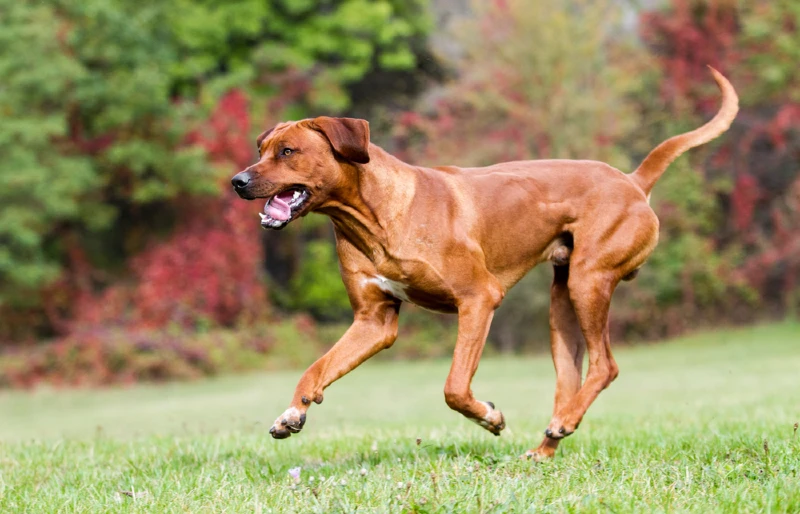
Do Rhodesian Ridgebacks Like Water?
Rhodesian Ridgebacks are a hardy breed and actually don’t mind getting wet in most cases, but every dog is different. Being that they’re often used for hunting and guard duty, they’re typically comfortable in the water. These dogs are a strong and athletic breed and are capable swimmers.
Rhodesian Ridgebacks are smart and are often eager to please. As a result, they can be easily trained to enjoy swimming and other water activities. With proper training and patience, your Rhodesian Ridgeback can become an excellent swimmer. It helps to water train these pups early, so that they can come familiar with water in a safe and relaxed environment. So to say, don’t just toss them in a shallow swimming pool and expect them to learn on their own.
What Health Issues Are Common in Rhodesian Ridgebacks?
Major Problems
One of the most common health issues seen in Rhodesian Ridgebacks is hip dysplasia – something that can be fairly common in older dogs as they age, and in some cases, develop weight issues. This condition is caused by abnormal joint development which can lead to painful joint degeneration. Other health problems that can affect the breed include elbow dysplasia, skin issues, and diabetes.
Hip dysplasia is usually seen in larger dog breeds and is caused by a combination of environmental factors and genetics. To reduce the risk of hip dysplasia, you’ll need to feed your Rhodesian Ridgeback a healthy, nutritious diet and to provide plenty of exercise. Your veterinarian may also recommend a hip and elbow x-ray to screen for any issues – this can help nip potential mobility and weight issues in the bud before they can become bigger problems.

Minor Problems
Also, more minor problems include skin issues such as allergies, hot spots, and bacterial or fungal infections. Allergies can be caused by food, environmental allergens, or even insect bites. Hot spots are areas of inflamed skin caused by excessive licking or chewing and can be very painful for your Ridge. Bacterial or fungal infections can be caused by pests, bad hygiene, and open wounds.
So, to help prevent skin issues, regular brushing and bathing are recommended, as well as weekly checking of the dog’s coat and overall health. You also want to ensure that you have some sort of anti-flea and anti-tick plan in place (like collars, baths, sprays, etc.), especially if you keep your dog outdoors.
Diabetes
Diabetes is another common health issue seen in Rhodesian Ridgebacks. Diabetes is caused by a lack of the hormone insulin, which is necessary for maintaining normal blood sugar levels. Symptoms of diabetes include excessive thirst, weight loss, and increased urination. If your dog is showing any of these signs, it is important to take them to the veterinarian as soon as possible for a diagnosis.
Overall, Rhodesian Ridgebacks are an intelligent, loyal breed of dog. However, it is important to be aware of the common health issues they are prone to, so that they can be managed and treated appropriately. Regular vet visits, a healthy diet, and plenty of exercise can all help to reduce the risk of your dog developing any of these health problems.
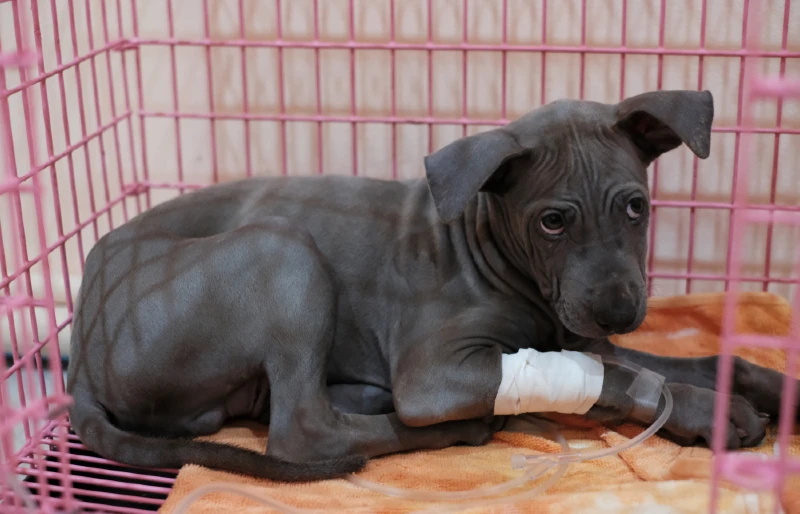
Do Rhodesian Ridgebacks Get Along with Cats?
They can. Rhodesian Ridges can get along with cats if properly socialized and trained. If you have a cat and are bringing a Rhodesian Ridge home, it’s best to do a good introduction and slowly introduce the patch to one another.
That being stated, it’s essential to remember that Rhodesian Ridgebacks are a hunting breed and are naturally inclined to chase small animals. So, keep your Rhodesian Ridgeback on a leash when introducing it to the cat or out in public. These dogs can be a bit scary due to their size and natural hunting instincts.
Are Rhodesian Ridgebacks Easy to Train?
Rhodesian Ridgebacks are an intelligent breed and are often eager to please. They are also strong-willed and need a firm and consistent hand in order to thrive. With proper training and patience, a Rhodesian Ridgeback can be easily trained.
Rhodesian Ridgebacks are a confident breed and are known for their independence. They are also a strong-willed breed and can be stubborn if not properly trained. It is important to be consistent and patient when training a Rhodesian Ridgeback.
Wrapping Things Up
Ridgeback dogs come in three different breeds: Rhodesian Ridgeback, Thai Ridgeback, and the Phu Quoc Ridgeback. All dogs are pretty versatile and are often used for hunting, guard duty, and as show dogs. They are also an excellent family pet and are very loyal and affectionate.
However, these dogs also have their own distinguishing characteristics and terms of personality, size, and appearance. The most common breed in the US is the Rhodesian Ridgeback, while the other two breeds are more common in Thailand and Vietnam. Overall, though, all breeds are pretty energetic and make excellent family pets.
Featured Image Credit: Nina Quka, Pexels


